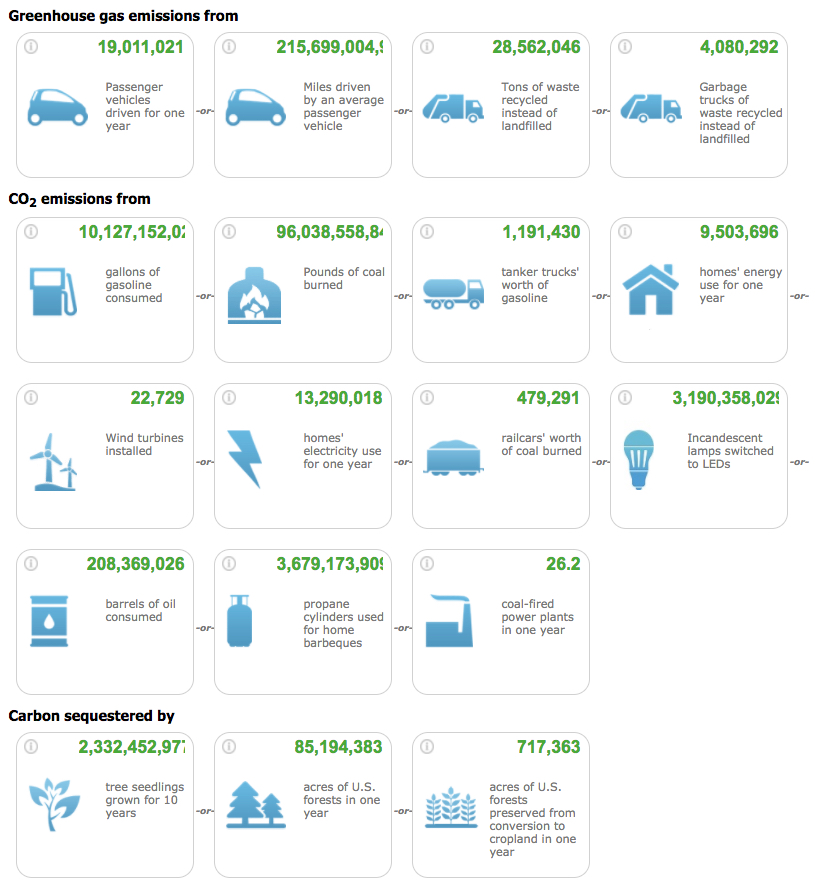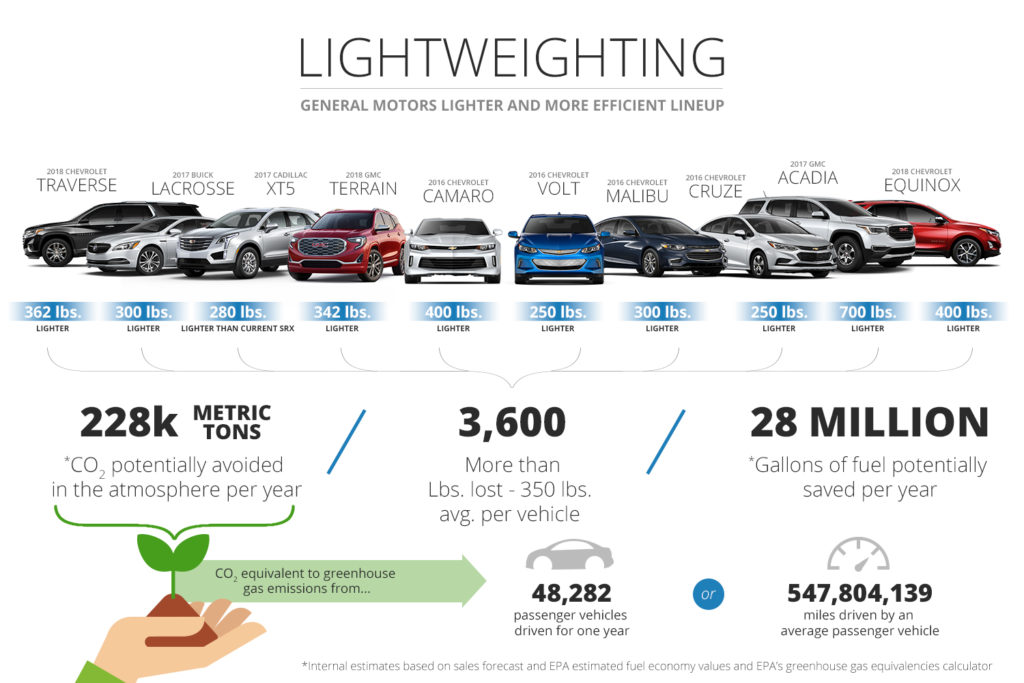General Motors is reducing its environmental footprint by shaving an average of 350 pounds from each of ten recently launched Buick, GMC, Chevrolet and Cadillac vehicles. The annual carbon emissions avoided from this weight loss is about equal to saving 28 million gallons of fuel, according to a statement issued by the company.
“We start with an understanding of the most important attributes to the customer, be it performance, EV range, interior space, towing capacity or fuel economy,” said Charlie Klein, GM executive director, global CO2 strategy, energy, mass and aerodynamics. “Then, we work to find the right mix of materials to deliver on that promise and exceed their expectations.”
General Motors explains that the company’s “Efficient Fundamentals” strategy includes advancing powertrain technologies, optimizing components and vehicle systems, improving aerodynamics, and lightweighting – reducing vehicle mass to achieve better performance overall without compromising safety or quality.

For example, the 2017 Chevrolet Volt is 250 pounds lighter than the first generation model, which contributed to its 30 percent increase in range. The Chevrolet Cruze also lost 250 pounds, giving customers even better fuel economy and increased interior space. Improvements in size, content, structure and chassis delivered a loss of 700 pounds in the GMC Acadia. And the Buick LaCrosse, which is longer and wider than its predecessor, is now 300 pounds lighter thanks to advanced materials such as press-hardened, high-strength steels that also provide customers with efficiency and more responsive handling.
When it comes to lightweighting, General Motors points out that there is no single solution. The company may use composites for sports cars like the Chevrolet Corvette where power-to-weight ratio is paramount. When a blend of strength and low mass is required, for example on chassis components, corrosion-resistant aluminum is the solution. Meanwhile, ultra high-strength steel allows for some parts to be made of thinner gauges without sacrificing strength. GM also employs a mix of new manufacturing joining techniques, such as the world’s first aluminum-to-steel resistance spot welding.
Another way in which General Motors reduces emissions is by engaging its supply chain. According to a statement issued by GM, last year the company asked about 200 of its suppliers to disclose their energy use and carbon emission data to CDP, a global nonprofit that drives sustainable economies, in return for which GM offered resources to help. The 70 percent of invited companies that responded saved a cumulative $23 billion and reduced carbon emissions in total by 90 million metric tons, which is equivalent to:

I invite you to view my other posts and sign up to receive future posts via email. I also invite you to follow me on LinkedIn and Twitter, and to contact me via my homepage.

